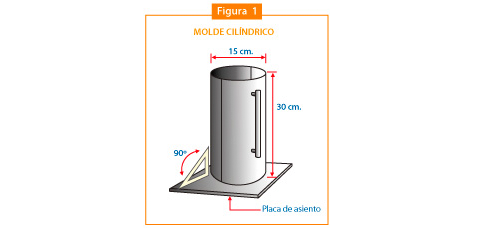Incorporation of Powdered Glass and Calcined Fan Shells into Concrete
DOI:
https://doi.org/10.36790/epistemus.v17i34.253Keywords:
Concrete, powdered glass, fluorescenceAbstract
The research seeks to determine the influence of the incorporation of pulverized glass and calcined fan shells on the pressure resistance of concrete f'c=210 kg/cm2. The methodology used in the research is applied, the design is experimental, with a quantitative approach and the samples are made up of an amount of 18 witnesses. The obtained results indicate that in the 7 days it is 194.5kg/cm2 in the standard concrete and 196.5kg/cm2 in the sample concrete; by day 14 it was 237.8kg/cm2 in the standard concrete and 238.9kg/cm2 in the sample concrete, additionally by 28 days we could observe that the compressive strength in the standard concrete was 295.4kg/cm2 less than the concrete shows that it was 306.1kg/cm2. It is important to highlight that by using powdered glass and calcined fan shells the quality of the design concrete f¨c=210 kg/cm2 is improved.
Downloads
References
D. Alan y L. Cortez. Procesos y fundamentos de la investigación científica. Universidad Técnica de Machala, 2017. ISBN: 978-9942-24-093-4
F. Arias. Diseño experimental. (Archivo de blog), 2012.
J. Arias; M. Villasís y M. Miranda. “El protocolo de investigación III: la población de estudio”. Revista alergia México, 63(2), 201-206, 2016. ISSN: 0002-5151. DOI: https://doi.org/10.29262/ram.v63i2.181 DOI: https://doi.org/10.29262/ram.v63i2.181
M. Cueva. Influencia del uso de residuo de concha de abanico como reemplazo de agregado en la porosidad del concreto. Tesis (Título de Ingeniero Civil). Piura: Universidad de Piura, 2019. 104 pp.
Empleo del vidrio reciclado triturado en sustitución parcial del árido fino para elaborar hormigón con fines de sostenibilidad por Zenaida Paulette Frómeta Salas [et al]. Santiago de Cuba: Centro de Información y Gestión Tecnológica, vol. 1, núm. 4: 64-81, agosto 2020.
J. Giraldo. Investigación del uso del vidrio crudo en la ciudad de Huaraz – barrio de Shancayan como material constructivo. Proyecto de investigación. Huaraz: Universidad Nacional Santiago Antúnez De Mayolo, 2020. 14 pp.
E. Hernández y J. Rojas. Estudio de la resistencia a la compresión del concreto, con vidrio molido reciclado como sustituto parcial del agregado fino. Tesis (Trabajo de grado). Bogotá: Universidad Católica De Colombia, 2021. 83 pp. https://hdl.handle.net/10983/27150
J. Lozada. “Investigación aplicada”. Revista de divulgación científica de la Universidad Tecnológica Indoamericana, 3(1), 47-50, 2014. ISSN-e: 1390-9592.
D. Peñafiel. Análisis de la resistencia a la compresión del hormigón al emplear vidrio reciclado molido en reemplazo parcial del agregado fino. Tesis (Título de Ingeniero Civil). Ecuador: Universidad Técnica De Ambato, 2016. 114 pp. http://repositorio.uta.edu.ec/jspui/handle/123456789/23038
J. Castañon. "El impacto económico y social de la gestión productiva en las empresas relacionadas al reciclaje de botellas de vidrio”. Bachiller de ingeniería industrial (Trabajo de investigacion). Peru: Universidad Privada del Norte, 2020. 31 pp. https://repositorio.upn.edu.pe/bitstream/handle/11537/26433/Trabajo%20de%20investigaci%C3%B3n.pdf?sequence=2

Downloads
Published
How to Cite
Issue
Section
License
Copyright (c) 2023 EPISTEMUS

This work is licensed under a Creative Commons Attribution-NonCommercial-ShareAlike 4.0 International License.
The magazine acquires the patrimonial rights of the articles only for diffusion without any purpose of profit, without diminishing the own rights of authorship.
The authors are the legitimate owners of the intellectual property rights of their respective articles, and in such quality, by sending their texts they express their desire to collaborate with the Epistemus Magazine, published biannually by the University of Sonora.
Therefore, freely, voluntarily and free of charge, once accepted the article for publication, they give their rights to the University of Sonora for the University of Sonora to edit, publish, distribute and make available through intranets, Internet or CD said work, without any limitation of form or time, as long as it is non-profit and with the express obligation to respect and mention the credit that corresponds to the authors in any use that is made of it.
It is understood that this authorization is not an assignment or transmission of any of your economic rights in favor of the said institution. The University of Sonora guarantees the right to reproduce the contribution by any means in which you are the author, subject to the credit being granted corresponding to the original publication of the contribution in Epistemus.
Unless otherwise indicated, all the contents of the electronic edition are distributed under a license for use and Creative Commons — Attribution-NonCommercial-ShareAlike 4.0 International — (CC BY-NC-SA 4.0) You can consult here the informative version and the legal text of the license. This circumstance must be expressly stated in this way when necessary.
The names and email addresses entered in this journal will be used exclusively for the purposes established in it and will not be provided to third parties or for their use for other purposes.























